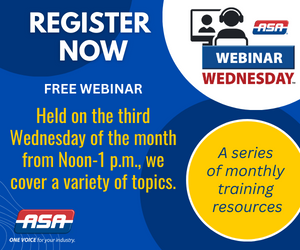Performance and Personal Accountability – Part 1 (The Owner’s Role)
Your auto shop’s performance starts with you. The culture, expectations, and accountability you set shapes how your team shows up every day. Frustrated by underperforming team members? Here’s the hard truth: their performance reflects what you allow or enforce.
If you want a high-performing shop, take an honest look at how you’re leading, coaching, and holding people accountable. Let’s break down the four levels of performance, both the good and the bad, and how they impact your shop.
 4 Levels of Performance in Your Shop (What it Means as an Owner)
4 Levels of Performance in Your Shop (What it Means as an Owner)
Every shop has poor, average, high, and peak performers. But instead of just looking at how they perform, we need to ask:
- What are you allowing?
- How is your leadership shaping their performance?
1. Poor Performers: The Cost of Toleration Every owner has dealt with chronically late, careless, or resistant-to-feedback team members.
How They Hurt Your Shop:
- Lost Productivity & Revenue – Poor performers drag down efficiency, costing the shop 34% of their salary in lost productivity (Gallup).
- Comebacks & Bad Reviews – Their work leads to rework, refunds, and unhappy customers.
- Lower Team Morale – Good team members get frustrated watching underperformers get away with it.
Your Accountability as an Owner:
Why are they still on your team? If they’ve been underperforming for months (or years), ask yourself: Have I set clear expectations and followed through?
What’s the exit plan? If coaching isn’t working, you owe it to your shop and your top team members to let them go.
2. Average Performers: The Silent Profit Killers. These team members do the job but never push themselves or the shop forward.
The Positives: Reliable and steady – They show up and get the work done.
The Problems They Create:
- No drive for improvement – If your shop is full of average team members, your shop’s potential will always be mediocre.
- They hold back high performers – Top team members want to be challenged. If your shop doesn’t push improvement, they’ll leave for one that does.
Your Accountability as an Owner:
Are you challenging them to improve? Average performers often don’t realize they can do better unless the owner sets a higher standard.
Are you setting expectations for growth? If someone has been at the same level for years, have you provided a path to grow?
Stat to Consider: A shop operating with mostly average performers runs at 80% of its revenue potential—meaning 20% of profits are left on the table (Harvard Business Review).
3. High Performers: The Backbone of Your Shop – These team members get the job done at a high level; hitting efficiency goals, producing top-quality work, and helping the team succeed.
The Positives:
- Strong revenue drivers – A top-performing tech can run at more than 100% efficiency, generating thousands in extra revenue.
- They elevate the team – Their strong work ethic and accountability raise the shop’s overall standards.
The Problems If You Don’t Lead Them Well:
- They need challenges – If there’s no growth or incentive, they’ll leave for a better shop.
- They get frustrated by poor leadership – High performers hate unclear expectations, weak management, and carrying dead weight.
Your Accountability as an Owner:
Are you giving them room to grow? Have you provided training, incentives, and leadership opportunities?
Are you leading by example? High performers respect decisive leadership. If they see inconsistency in how you run the shop, they’ll start looking elsewhere.
Stat to Consider: High performers are up to 400% more productive than average ones (McKinsey & Co.).
These team members get the job done at a high level; hitting efficiency goals, producing top-quality work, and helping the team succeed.
4. Peak Performers: The Game-Changers. These elite team members care about the shop, take ownership, and drive innovation.
The Positives:
- They create momentum – A few peak performers pull the whole team up.
- They drive higher profits – The top 5% of team members produce 25% or more of a shop’s total output.
The Problems If You Don’t Lead Them Well:
- They need high expectations – If you tolerate mediocrity, they’ll leave.
- They expect rewards & growth – If you don’t provide career growth, another shop will.
Accountability as an Owner:
Are you keeping them engaged? What opportunities are you offering to keep them motivated?
Are you protecting your culture? If slackers stick around, you’ll lose your peak performers first.
Stat to Consider: The top 5% of team members generate 25% of company profits (McKinsey & Co.).
Owners Set the Standard: Team’s performance reflects what you allow, encourage, and enforce.
Poor performance? – Have you been clear and consistent in expectations?
Mediocre performance? – Have you given team members a reason to improve?
Great performance? – Are you rewarding and retaining your best people?
It starts with you.
In Part 2, I’ll break down how to create a culture of growth, where team members take ownership of their own performance, and you don’t have to constantly push them.
The right team can make your shop profitable, sustainable, and enjoyable—but only if you lead it that way.
Maryann Croce is a business coach specializing in helping single-location auto shop owners gain more time, with her 3-Day Weekends System. With a focus on people, process or profit challenges, she helps owners transform their shops into profitable, sustainable and enjoyable businesses. Visit SmallBizVantage.com to learn more about having a rewarding business & life.








